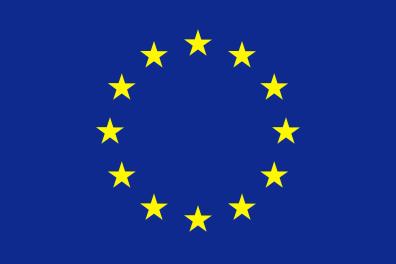Donate to Support Supercluster
Your support makes the Astronaut Database and Launch Tracker possible, and keeps all Supercluster content free.
SUPPORTSupercluster on Patreon
Your support makes the Astronaut Database and Launch Tracker possible, and keeps all Supercluster content free.
SUPPORTThis goes
to space
CO3D
The CO3D (Constellation Optique 3D) mission is a collaboration between Airbus Defence and Space and the French Space Agency (CNES), focused on advancing Earth observation through high-resolution 3D mapping. The constellation consists of four identical satellites, each weighing about 300 kg and featuring full electric propulsion systems for efficient orbit control.
CO3D is designed to deliver global Digital Surface Models (DSMs) with a spatial resolution of 50 cm in visible and near-infrared bands. These DSMs achieve approximately 1-meter relative altimetric accuracy and cover Earth's land surfaces between latitudes -60° and +70°. The satellites operate in pairs, orbiting on opposite sides of the Earth and separated by about 100 km to enhance revisit rates and enable stereo imaging for accurate 3D reconstructions.
Each CO3D satellite incorporates cutting-edge technologies, including the LASIN optical laser communication demonstrator, which supports data download rates up to 10 Gbps—much faster than traditional radio frequency links. They also feature onboard processing capabilities that utilize artificial intelligence and deep learning for real-time feature detection and data extraction. Additionally, advanced sensors with noise reduction enable imaging in low-light conditions, such as urban areas at night.
The CO3D constellation plans to map around 40 million square kilometers annually, with the goal of achieving full global coverage within five years. The produced DSMs will support a variety of applications, including urban planning, disaster management, environmental monitoring, hydrology, geology, and civil security. After six months of in-orbit testing, the satellites will begin delivering operational 3D mapping services, initially focusing on France and the "crisis arc" region.
Courtesy of Airbus Defence and Space and CNES.

This goes
to space
MicroCarb
MicroCarb is a European satellite mission led by the French Space Agency (CNES), in partnership with the UK Space Agency (UKSA). It is designed to monitor atmospheric carbon dioxide (CO₂) concentrations with high precision, helping scientists better understand the global carbon cycle and support climate change mitigation efforts.
The satellite carries a dispersive spectrometer that measures reflected sunlight in four spectral bands, enabling it to detect CO₂ levels with an accuracy of about 1 part per million (ppm). MicroCarb will operate in a sun-synchronous orbit at an altitude of approximately 650 km. Its observations will cover the globe with a ground resolution of roughly 4.5 × 9 km, and a finer 2 × 2 km resolution when focusing on urban areas.
MicroCarb’s data will provide critical insights into sources and sinks of CO₂, such as emissions from cities, vegetation, and oceans. This information is essential for verifying greenhouse gas inventories, refining climate models, and supporting international climate agreements. The mission complements other Earth observation efforts that track atmospheric composition and climate dynamics.
The mission is planned to last about five years, during which MicroCarb will deliver continuous, high-quality measurements to aid climate research and policymaking. This initiative reflects CNES’s commitment to leveraging space technology to address pressing global environmental challenges.
Courtesy of French Space Agency (CNES)

On this
rocket
Vega-C
ESA’s Vega-C is a next-generation launch vehicle that succeeds the original Vega rocket, offering enhanced performance, greater payload volume, and increased competitiveness. Operating from Europe’s Spaceport in French Guiana, Vega-C strengthens Europe’s independent access to space and supports a wider range of missions, including return-to-Earth operations with ESA's upcoming reusable Space Rider vehicle.
Specs
Height: 34.8 m (114 ft)
Diameter: 3.4 m (11 ft)
Mass: 210,000 kg (460,000 lb)
Stages: 4
Payload to sun-synchronous orbit: 2,300 kg (5,100 lb)
Payload to polar orbit: 2,250 kg (4,960 lb)
Vega-C is designed to accommodate a variety of missions, from launching small CubeSats to carrying a single large satellite. It features significant upgrades over its predecessor, including new solid propulsion stages, an enhanced upper stage with reignition capability, a larger fairing for increased volume, and upgraded ground infrastructure.
Its upper stage, AVUM+ (Attitude Vernier Upper Module), enables precise orbital insertions and multiple burns, making it ideal for delivering multiple payloads to different orbits in a single mission. Once all payloads are deployed, AVUM+ performs a final deorbit burn to minimize space debris.
Vega-C’s development and operations are supported by multiple ESA member states, reflecting broad European cooperation. Participating countries include Austria, Belgium, Czech Republic, France, Germany, Ireland, Italy, Netherlands, Norway, Romania, Spain, Sweden, and Switzerland.
Courtesy of ESA

From this
launch site
ELV - Guiana Space Center - Kourou, French Guiana
The Ensemble de Lancement Vega (ELV) pad at the Centre Spatial Guyanais (Guiana Space Centre) was previously used to launch the Europa, Ariane 1, Ariane 2, and Ariane 3 rockets under a different name.
It hosted its first launch on November 5, 1971, when a Europa rocket carried the STV-4 payload. The pad was last used in 1989 for the final Ariane 3 launch before going unused until 2012, when Vega began operations.
Located in French Guiana, the ELV pad is part of the French and European spaceport near Kourou, on the northern coast of South America.
Guiana Space Centre
The Guiana Space Centre has been operational since 1968, serving the European Space Agency (ESA), the French National Centre for Space Studies (CNES), and commercial companies such as Arianespace and Azercosmos.
A total of nine different rocket types have launched from the spaceport, including three active rockets and six retired vehicles.
The current launch vehicles operating from the Guiana Space Centre include:
Ariane 5 – for heavy payloads.
Soyuz 2 (provided by Russia) – for medium-mass satellites.
Vega – for smaller spacecraft.
The spaceport is also preparing for the upcoming Ariane 6, Vega C, and Vega E rockets, which are currently under development.
Photo courtesy of Arianespace

Another Launch
See All LaunchesGET THE SUPERCLUSTER APP
THE SUPERCLUSTER PODCAST
A podcast exploring the amazing milestones that changed space history, the wildest ideas that drive our future, and every development in this new Golden Age of Space.
Donate to support
Your support makes the Astronaut Database and Launch Tracker possible, and keeps all Supercluster content free.
SupportCOPYRIGHT 2021 SUPERCLUSTER LLC







